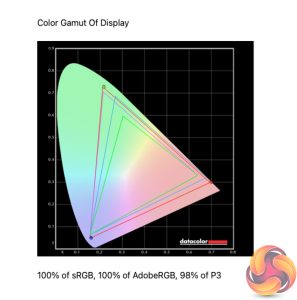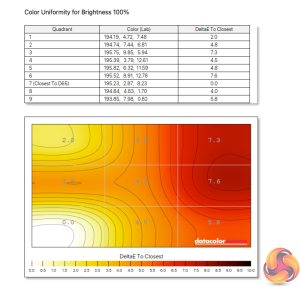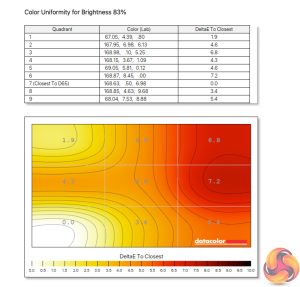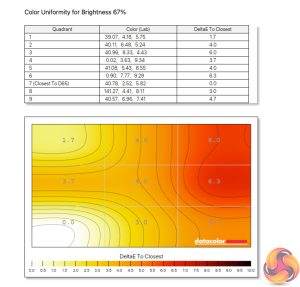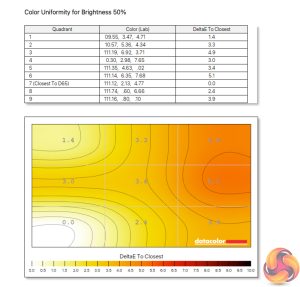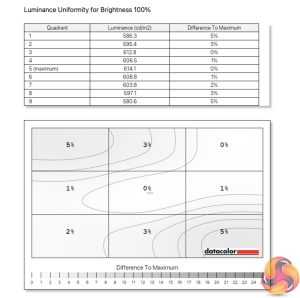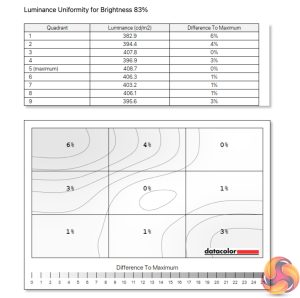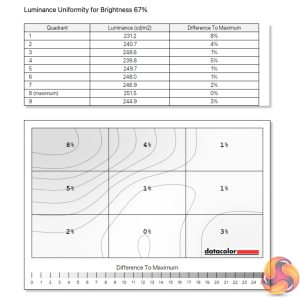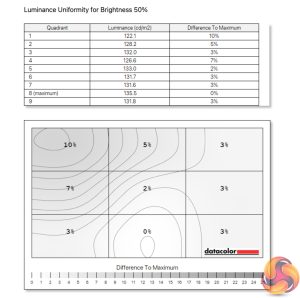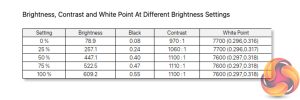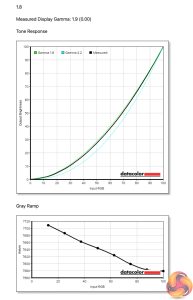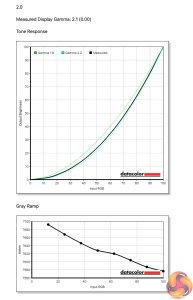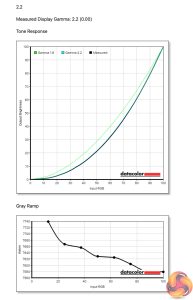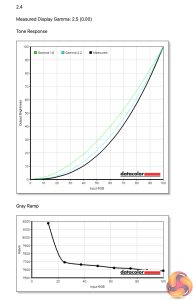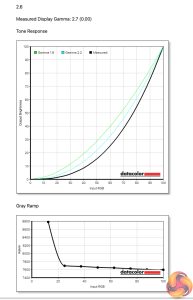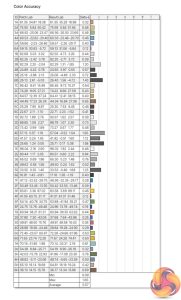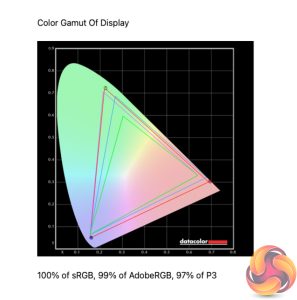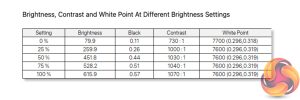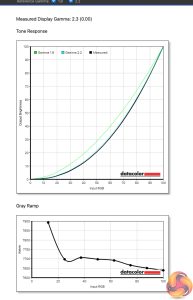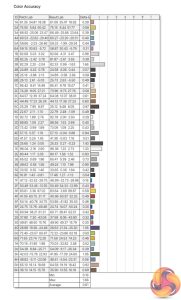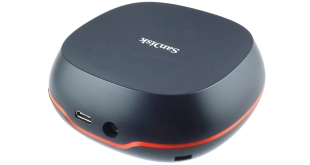Our main test involves using a DataColor SpyderX Colorimeter to assess a display’s image quality. The device sits on top of the screen while the software generates colour tones and patterns, which it compares against predetermined values to work out how accurate the screen is.
The results show –
- A monitor’s maximum brightness in candelas or cd/m2 at various levels set in the OSD.
- A monitor’s contrast ratio at various brightness levels in the OSD.
- The brightness deviation across the panel.
- The black and white points.
- The colour accuracy, expressed as a Delta E ratio, with a result under 3 being fine for normal use, and under 2 being great for colour-accurate design work.
- The exact gamma levels, with a comparison against preset settings in the OSD.
We first run this test with the display in its default, out-of-the-box state, with all settings on default. We then calibrate the screen using the Spyder software and run the test again.
Pre-calibration
Gamut coverage is excellent for the GP27U, no doubt thanks to the Quantum Dot layer applied. It boasts 100% sRGB, 100% Adobe RGB and 98% DCI-P3, one of the best results we've ever seen.
There is come aberrance when it comes to colour temperature uniformity however, particularly along the right-hand side. This gets less dramatic at lower brightness levels though, and considering the GP27U gets rather bright in SDR mode (as we see below), this is less of a problem than it otherwise would be as you're unlikely to be running at 100% brightness for regular usage.
Luminance uniformity is very good across the board, likely due to the mini-LED backlight that is deployed. At 100% brightness for instance, we see 5% deviation at most. This does increase at lower brightness levels, but only to a maximum of 10% which is still decent.
Speaking of brightness then, the GP27U was able to hit and even slightly exceed its rated luminance, with our measurements showing a peak of 609 nits in SDR. It's minimum of 79 nits could be better, but it's great to see just how bright it can get. Contrast is very decent for an IPS panel however, hitting 1100:1. It may not be at the same level as a VA panel, but as IPS screens go, this could be a lot worse.
As for gamma, there's a total of five settings in the OSD. Each tends to read a slightly higher average gamma level than intended – with the Gamma 2.0 setting showing a value of 2.1 The good news is the Gamma 2.2 setting works as intended, offering an average gamma level of 2.2, so no complaints there.
Lastly, out of the box colour accuracy is highly impressive. We recorded an average DeltaE of just 0.57, with a maximum of 1.65. This is one of the best results we've ever seen, so big kudos to Cooler Master here.
Post-calibration
As always, we calibrated the screen and re-tested a few key metric, but honestly for gamers this isn't worth doing. Very little changed, and even the colour accuracy stayed about the same.
 KitGuru KitGuru.net – Tech News | Hardware News | Hardware Reviews | IOS | Mobile | Gaming | Graphics Cards
KitGuru KitGuru.net – Tech News | Hardware News | Hardware Reviews | IOS | Mobile | Gaming | Graphics Cards



